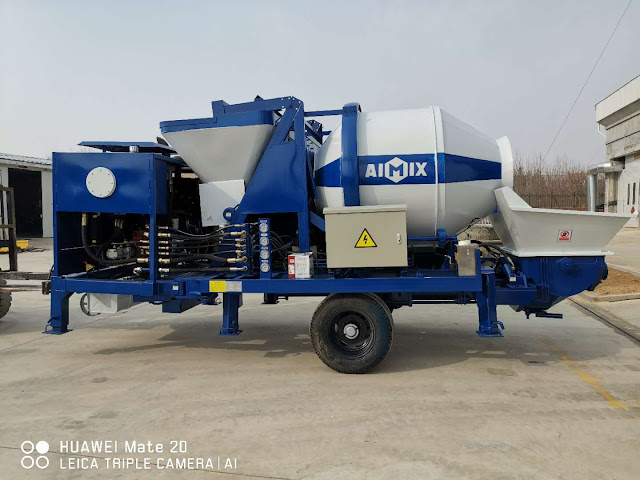First Calibration System That Even Beginners Can Use
In construction, accurate concrete mixing isn’t just a technical requirement—it’s the foundation of structural safety and long-term performance. But for years, concrete calibration has been a job for experts. Now, that’s changing. With the introduction of the first user-friendly calibration guidance system for self-loading concrete mixers, even beginners can produce consistently high-quality concrete with minimal training. This innovation is not only boosting efficiency but also helping contractors reduce costs and improve jobsite performance.
Why Calibration Matters in Concrete Mixing
Proper calibration ensures the correct ratio of cement, sand, gravel, and water in every batch. If the balance is off—even slightly—it can compromise the strength, workability, and durability of the concrete. Traditionally, calibration required experienced technicians to manually adjust weighing systems and interpret technical data.
Inconsistent calibration can lead to:
-
Material waste due to overuse of cement or water
-
Structural defects caused by incorrect mix strength
-
Delays due to rework or failed quality inspections
For small- to medium-sized contractors or teams working in remote areas, hiring a skilled calibration specialist for every project is costly and often impractical. That’s where smart calibration systems in modern self-loading concrete mixers(autohormiguera) come in.
What Makes This Calibration System Different?
Step-By-Step Visual Guidance
The first beginner-friendly calibration system is designed with usability at its core. Operators are guided through each step with on-screen instructions, often in the form of icons or animations. There’s no need to memorize complex procedures or understand technical jargon.
This is particularly useful for contractors working across Latin America, where operator training levels can vary widely between teams and regions.
Automated Error Detection
If an input is incorrect—such as selecting the wrong material bucket or entering an inaccurate reference weight—the system will flag it instantly. This helps prevent mix ratio errors before they happen, saving both time and materials.
Faster Setup for New Projects
When moving to a new jobsite or switching materials, recalibration is often required. With this new system, calibration can be completed in just minutes, even by first-time users. This makes it easier to relocate the self-loading concrete mixer between projects without losing productivity.
Real Advantages for Construction Crews
No More Guesswork
With traditional mixers, operators often relied on experience or trial-and-error. Now, with guided calibration, even an entry-level worker can follow the steps confidently, knowing the output will meet project specifications.
Improved Efficiency and Less Waste
Accurate calibration reduces excess cement usage and ensures water levels are optimized. That means more consistent batches, less waste, and lower operational costs—especially important when managing the overall self-loading concrete mixer price(autohormigonera precio) across multiple projects.
Fewer Delays on Site
Incorrect mix ratios are a common reason for project delays. By eliminating manual calibration errors, crews can meet concrete strength requirements on the first try, keeping schedules on track.
How It Supports Smarter Construction in Latin America
In many parts of Latin America—such as Peru, Colombia, or Mexico—construction teams often work in rural or mountainous regions where technical support is limited. Having a self-loading concrete mixer with an intuitive calibration system means:
-
Faster onboarding of local workers with minimal training
-
Less dependency on external technical teams
-
Increased confidence in concrete quality for government or infrastructure contracts
It also gives small contractors a competitive edge. When bidding for jobs, being able to guarantee accurate, high-quality mixes can win trust—and more projects.
What to Consider Before Investing
If you're evaluating self-loading concrete mixer(hormigonera autocargable) price options, don’t just compare drum size or horsepower. The real long-term value lies in smart features like the calibration guidance system. A slightly higher upfront cost can be offset by savings on materials, labor training, and error-related downtime.
Look for models that offer:
-
Touchscreen interface with multi-language support
-
Integrated sensor systems for weighing accuracy
-
Updateable software for future improvements
-
Local after-sales support and training options
Final Thoughts
The first beginner-friendly calibration system is more than just a feature—it’s a productivity tool that helps every team member contribute to quality construction. By simplifying a traditionally complex process, it empowers more operators, reduces risk, and makes concrete mixing smarter and more accessible than ever.
If you’re looking to boost jobsite performance and reduce operational headaches, a self-loading concrete mixer with smart calibration might be your best investment yet. And when considering self-loading concrete mixer price, don’t forget to count the value of efficiency, consistency, and ease of use—it might just pay for itself sooner than you think.




Comments
Post a Comment